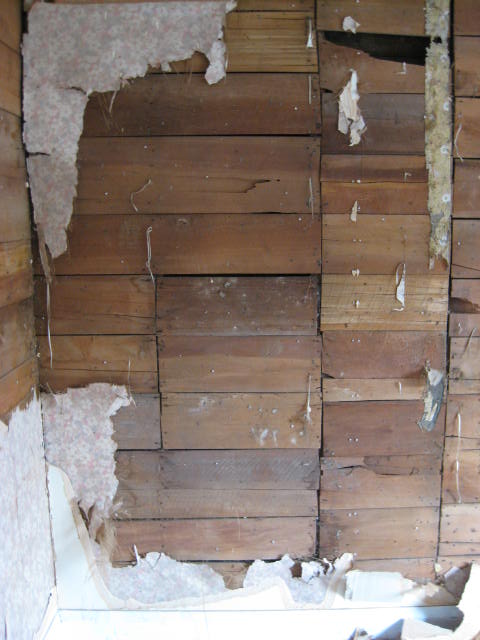Replacing Scrim With GIB – Why Should I Do It?
Written by Claire on . Posted in About Houses, Renovation
Last blog post we discussed just what Scrim and Sarking was and how to identify it. This week we are discussing why it should be replaced. If you want to skip right to the practicalities check out our posts on - what is re-GIBing and what will it cost to re-GIB.
What’s Wrong With Scrim and Sarking?
Scrim and Sarking is a fire hazard – is it dry and brittle – having been aging and drying within your house for nearly 100 years. Combined with aged wiring, the risk of fire, and risk or significant damage from a fire, is much higher than that of a modern home.
Scrim wall linings are also very unsuitable for the purposes of redecoration. When scrim deteriorates, it comes away from the Sarking leaving an unstable base for painting or wallpapering (particularly in room corners – this is a very tell-tale sign of Scrim).
Why Should I Re-GIB?
Insuring your home can be problematic when you have inferior wall linings. Your insurance company will ask if your house has been relined when you get insurance, they consider Scrim & Sarking wall linings an increased risk factor for damage.
If you have Scrim & Sarking wall linings, especially combined with old wiring your insurance company may not be prepared to offer you their most comprehensive insurance policy.
Replacing Scrim and Sarking - The Result
Replacing Scrim and Sarking with GIB will give you a stable, fireproof, smooth wall that when GIB Stopped and redecorated (painted or wallpapered) will give you the ability to get a high quality finish. Removing old wall linings before re-GIBing also gives you an opportunity to access and repair the wiring, and insulation a room.
So to ensure you home is safe, to be able to get a comprehensive insurance policy and to get the most benefit out of any renovating and redecorating – removing Scrim and Sarking and re-GIBing is essential.
Next Post - Replacing Scrim with GIB – What is Re-GIBing?
The Propertytoolbox Home Buyers Guide
Still on the house hunt? Check out our house buying guide – we have all sorts of tips and tricks to help you make great house buying decisions.





